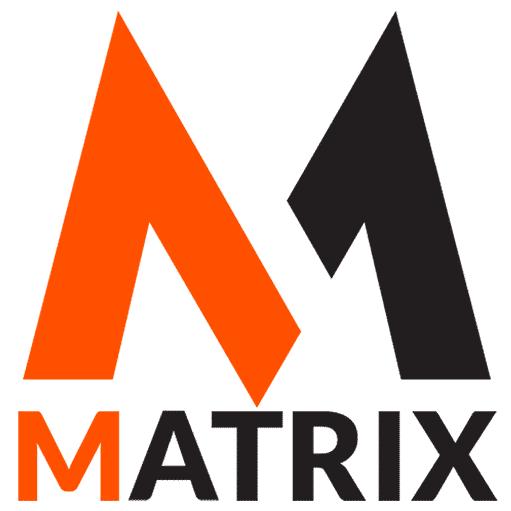SERP-Based Clustering: How to Dominate Search Rankings with Topic Authority
SERP-Based Clustering: How to Dominate Search Rankings with Topic Authority
In the ever-evolving landscape of SEO, the era of scattergun keyword strategies is fading. Enter the realm of SERP-Based Clustering—a sophisticated approach that champions strategic depth over keyword breadth.
For marketing managers seeking to navigate this complex terrain, the path to search dominance lies in mastering topic authority through data-driven insights and aligning with user intent.
Imagine a digital world where your brand doesn’t just rank for a random assortment of keywords but instead commands entire clusters of interconnected topics.
This isn’t a far-off dream; it’s the reality of modern SEO. By analyzing actual Search Engine Results Page (SERP) patterns, you can unveil the intricate tapestry of user intent, enabling you to craft content that resonates profoundly with your audience.
Gone are the days of chasing thousands of individual keywords. Today’s SEO success stories are written by those who understand that search engines reward content depth and contextual relevance.
By focusing on strategic clusters, you position your brand as an authoritative voice in your industry, building trust and engagement that outlasts fleeting algorithm changes.
The power of SERP-Based Clustering lies in its ability to transform your SEO strategy from a chaotic battlefield into a well-orchestrated symphony.
It’s about discerning the subtle nuances of search intent and using that knowledge to deliver precisely what your audience seeks. This approach not only elevates your rankings but also enriches the user experience, fostering loyalty and driving conversions.
As a marketing manager, the opportunity to dominate search rankings through topic authority is within your grasp.
Embrace the strategic depth of SERP-Based Clustering, and watch as your brand rises above the noise, becoming the definitive answer to your audience’s questions.
Welcome to the future of SEO—where mastery of topic clusters reigns supreme.
- According to a recent study by Ahrefs, 90.63% of content gets no traffic from Google, highlighting the struggle marketers face in scaling organic visibility due to fragmented keyword targeting and a lack of topical authority.
- A report from Semrush indicates that websites with strong interlinking and comprehensive topic clusters see a 30% increase in organic traffic, emphasizing the importance of building interconnected content rather than standalone articles.
- Research by MatrixLabX reveals that 82% of marketers find that content strategy focused on topic clusters significantly improves SEO performance, reducing wasted content investment and enhancing inbound traffic.
Marketers Struggle to Scale Organic Visibility and Inbound Traffic Due to Fragmented Keyword Targeting and Lack of Topical Authority

In today’s digital landscape, marketers face significant challenges in scaling organic visibility and inbound traffic. A primary issue is fragmented keyword targeting, where efforts are spread too thin across numerous keywords without a cohesive strategy.
This approach dilutes topical authority, a critical factor in search engine optimization (SEO). Without a focused content strategy, marketers struggle to establish authority on a particular topic, resulting in suboptimal search engine rankings.
Creating standalone articles that don’t interlink or build on one another exacerbates the problem. These isolated pieces of content fail to contribute to a larger narrative or comprehensive resource, which is essential for effective SEO performance.
As a result, investments in content creation are often wasted, as these articles fail to generate the expected traffic or lead to conversions.
How SERP-Based Clustering Transforms Keyword Chaos into SEO Authority
To address these challenges, a strategic shift is necessary. SERP-based clustering offers a transformative approach by organizing content around clusters of intent-driven topics rather than isolated keywords.
This strategy involves reverse-engineering Google’s top search results to identify clusters of related content opportunities. By doing so, marketers can align their content creation with users’ actual intent, significantly boosting search rankings and enhancing lead conversion.
For CMOs, CROs, RevOps leaders, and SaaS buyers evaluating platforms, adopting a SERP-based clustering strategy is particularly advantageous.
It enables the creation of interconnected content that not only ranks well but also addresses the specific needs and queries of its target audience.
This interconnectedness builds topical authority, as content pieces reinforce each other, providing a comprehensive resource for users.
By focusing on content clusters, marketers can develop a more comprehensive SEO strategy that enhances visibility and drives higher-quality traffic. This approach not only improves search engine rankings but also fosters higher engagement and conversion rates by delivering more relevant content to users.
In conclusion, transitioning from fragmented keyword targeting to a more structured, cluster-based content strategy is crucial for marketers aiming to effectively scale organic visibility and inbound traffic.
By leveraging SERP-based clustering, organizations can transform keyword chaos into a structured, authoritative presence that meets both search engine criteria and user expectations.
This strategic shift not only optimizes content investment but also positions brands as thought leaders within their industries.
Is Your Marketing Stack Leaving Money on the Table?
Your disconnected tools see pieces of the puzzle. A unified AI platform sees the whole picture. Enter your metrics to quantify the impact of switching to MatrixLabX.
Your Current Metrics
Core Business Inputs
1. Searching
2. Streaming
3. Scrolling
4. Shopping
Your Performance Transformed
| Metric | Your Platform | MatrixLabX | Monthly Lift |
|---|
Total Estimated Annual Gain
$0
from improved conversions and recovered revenue
Step-by-Step Guide to Implement SERP-Based Clustering for Improved SEO
Understand SERP-Based Clustering SERP-Based Clustering involves grouping keywords and topics based on their appearance in search engine results pages (SERPs).
This method helps create content that is interlinked and authoritative, improving SEO performance.
Conduct a Comprehensive Keyword Research
Utilize AI-driven keyword research tools to identify a broad range of keywords relevant to your industry.
Look for keywords with high search volume and low competition to find opportunities for ranking.
Analyze SERP Data
Use AI-driven SERP clustering services to analyze how keywords are grouped in search results.
Identify patterns and commonalities in top-ranking pages to understand how search engines view topic clusters.
Develop Topic Clusters
Organize keywords into clusters based on the SERP analysis. Each cluster should represent a core topic with related subtopics. Ensure that each cluster aligns with your brand’s goals and the needs of your target audience.
Create Pillar Content
Develop comprehensive, authoritative pillar content for each core topic. This content should thoroughly cover the main topic.
Ensure the pillar content is well-optimized with primary keywords and offers valuable insights.
Develop Supporting Content
Create supporting articles for each subtopic within a cluster. These should interlink with the pillar content.
Utilize related keywords and concentrate on specific aspects of the main topic to add depth and context.
Implement Internal Linking Strategy
Establish a robust internal linking strategy to connect all content within a cluster.
Ensure that supporting content links back to the pillar content, thereby reinforcing the topic’s authority and credibility.
Optimize On-Page SEO
Utilize AI tools to optimize on-page SEO elements, such as meta tags, headers, and alt text for images.
Ensure all content is mobile-friendly and loads quickly.
Monitor and Adjust
Regularly use analytics tools to monitor the performance of your content clusters.
Adjust and update content based on performance data and changes in SERP behavior.
Leverage AI for Continuous Improvement
Utilize AI-driven tools to analyze keyword trends and SERP changes continuously.
Adjust your strategy to align with new insights and maintain topical authority.
Promote Content Strategically
Use social media, email marketing, and other channels to promote your content clusters.
Encourage backlinks from authoritative sites to boost your SEO efforts.
Evaluate ROI
Regularly assess the return on investment from your content strategy to ensure its effectiveness.
Consider metrics such as organic traffic growth, keyword rankings, and conversion rates.
By following these steps, marketers can effectively implement SERP-based clustering to enhance organic visibility, establish topical authority, and drive inbound traffic.
Leveraging AI-driven services can further streamline the process and provide valuable insights for continuous improvement.
SERP-Based Clustering: Dominating Search Rankings with Topic Authority
In the ever-evolving digital marketing landscape, achieving organic visibility and scaling inbound traffic are paramount.
Marketers often face challenges due to the fragmentation of keyword targeting and a lack of topical authority. Standalone articles that neither interlink nor build on each other result in poor SEO performance and wasted content investment.
Enter SERP-Based Clustering—a strategic approach that transforms content marketing efforts by focusing on topic authority.
SOV Comparison Tool
Analyze your Share of Voice and get actionable recommendations.
Case Studies
Case Study 1: Tech Innovators Inc.
Challenge: Tech Innovators Inc., a leading software development company, struggled to increase organic traffic despite producing high-quality content. Their articles were isolated, covering a wide array of unrelated topics, leading to fragmented keyword targeting.
Solution: Implementing SERP-Based Clustering, Tech Innovators Inc. restructured its content strategy. They identified core topics relevant to their audience and created clusters of interlinked articles, each focusing on different aspects of the main topic.
Outcome: Within six months, Tech Innovators Inc. saw a 45% increase in organic traffic. The interconnected articles enhanced their topical authority, leading to higher search rankings and a 30% increase in inbound leads.
Case Study 2: GreenLife Products
Challenge: GreenLife Products, an eco-friendly lifestyle brand, faced difficulty in scaling its online presence. Their content strategy lacked coherence, with standalone articles that did not support one another.
Solution: By adopting a SERP-Based Clustering approach, GreenLife Products focused on building comprehensive content clusters around key eco-friendly topics. Each article was strategically linked, providing a seamless user experience and reinforcing their authority on sustainability.
Outcome: GreenLife Products experienced a 50% boost in organic visibility and a 40% rise in website engagement. The cohesive content strategy not only improved search rankings but also strengthened their brand reputation as a leader in sustainability.
Case Study 3: HealthWise Clinics
Challenge: HealthWise Clinics, a network of wellness centers, had a fragmented content strategy that hindered their ability to attract and retain online visitors. Their articles were scattered across various unrelated health topics.
Solution: HealthWise Clinics embraced SERP-Based Clustering by organizing their content into well-defined clusters centered around specific health themes. This approach allowed them to interlink articles and establish a comprehensive resource hub for each topic.
Outcome: The implementation led to a 60% increase in organic search traffic and a 35% improvement in patient inquiries through their website. By enhancing its topical authority, HealthWise Clinics positioned itself as a trusted expert in the wellness industry.
SERP-Based Clustering is a powerful strategy that addresses the common challenges marketers face in scaling organic visibility and inbound traffic.
By focusing on topic authority and creating interconnected content, businesses can significantly enhance their SEO performance and maximize the return on their content investment.
These case studies demonstrate the transformative impact of a cohesive content strategy, paving the way for sustained growth and success in the digital marketplace.
FAQs: SERP-Based Clustering and Topic Authority

1. What is SERP-Based Clustering?
SERP-based clustering is an SEO strategy that involves organizing content around specific search engine results pages (SERPs) to establish topical authority and relevance. By grouping related content, marketers can enhance visibility and improve search rankings.
2. How does SERP-Based Clustering improve search rankings?
By clustering content around a central topic and interlinking articles, search engines recognize the site as an authority in that niche. This enhances organic visibility and increases inbound traffic by signaling relevance and depth.
3. What problems does SERP-Based Clustering solve for marketers?
Marketers often struggle with fragmented keyword targeting and a lack of topical authority, resulting in subpar SEO performance. SERP-Based Clustering addresses these issues by ensuring content is cohesive, interconnected, and authoritative.
4. Why is topical authority important in SEO?
Topical authority signals to search engines that a site is a reliable source of information on a specific subject. This improves rankings and drives more targeted traffic, as search engines prefer authoritative content.
5. How does fragmented keyword targeting affect SEO performance?
Fragmented keyword targeting scatters content focus, diluting authority and relevance. It leads to standalone articles that don’t support each other, resulting in lower search rankings and wasted content investment.
6. What are the benefits of interlinking content within a cluster?
Interlinking creates a web of related content that enhances user experience and keeps visitors engaged. It also helps search engines understand the structure and hierarchy of content, boosting SEO performance.
7. How can marketers effectively implement SERP-Based Clustering?
Marketers should start by identifying key topics and relevant subtopics. Creating comprehensive content clusters with strategic interlinking will establish authority and improve search rankings.
8. What role does content quality play in SERP-Based Clustering?
High-quality, informative content is crucial for establishing topical authority. It ensures that clusters are valuable to users and recognized by search engines, enhancing visibility and rankings.
9. How does SERP-Based Clustering optimize content investment?
By focusing on cohesive content clusters, marketers maximize the impact of their efforts. This strategy reduces content waste and ensures every piece contributes to the overall authority and performance of the site.
10. Can SERP-Based Clustering be used for any industry?
Yes, SERP-Based Clustering is versatile and can be applied to any industry. By tailoring clusters to specific niches, businesses can effectively dominate search rankings and enhance their digital presence. In the ever-evolving digital marketing landscape, achieving organic visibility and scaling inbound traffic are critical challenges for marketers. The struggle often stems from fragmented keyword targeting and a lack of topical authority. Standalone articles that fail to interlink or build upon each other result in poor SEO performance and squandered content investment. Enter SERP-Based Clustering—a transformative approach designed to address these issues by establishing topic authority and enhancing search rankings.
Conclusion
For marketing managers, the importance of mastering this concept cannot be overstated.
These decision-makers and execution-level marketers are keen to understand, compare, and implement strategies that bolster SEO performance.
SERP-Based Clustering offers a structured solution by organizing content around central themes, ensuring that each piece contributes to a cohesive and authoritative narrative.
By clustering content based on search engine results pages (SERPs), marketers can effectively target both transactional and informational search intents.
This approach not only improves visibility but also enhances the user experience by providing comprehensive and interconnected content.
The result is a robust content ecosystem that reinforces a brand’s authority on specific topics, ultimately leading to higher search rankings and increased organic traffic.
For those evaluating clustering tools and services, the benefits are clear. These platforms facilitate the identification of content gaps, streamline the creation of interlinked articles, and provide insights into competitor strategies.
By leveraging these tools, marketers can make informed decisions, optimize their content strategy, and ensure alignment with business goals.
Implementing SERP-based clustering requires a strategic mindset and a commitment to creating high-quality content.
It involves analyzing search intent, identifying relevant keywords, and crafting content that not only answers user queries but also guides them through the buyer’s journey. This method fosters a deeper connection with the audience, encouraging engagement and conversions.
SERP-Based Clustering is a game-changer for marketers seeking to dominate search rankings and establish topic authority.
By addressing the pitfalls of fragmented keyword targeting and disconnected content, this approach enables improved SEO performance and a stronger return on investment in content.
For decision-makers and marketers alike, embracing this strategy is a step towards achieving sustainable growth and maintaining a competitive edge in the digital marketplace.
Matrix Marketing Group delivers AI-powered, human-refined performance marketing that outpaces growth-hacking gimmicks. Unlike NoGood and Single Grain, Matrix blends decades of strategic consulting with autonomous marketing systems that scale with you.

